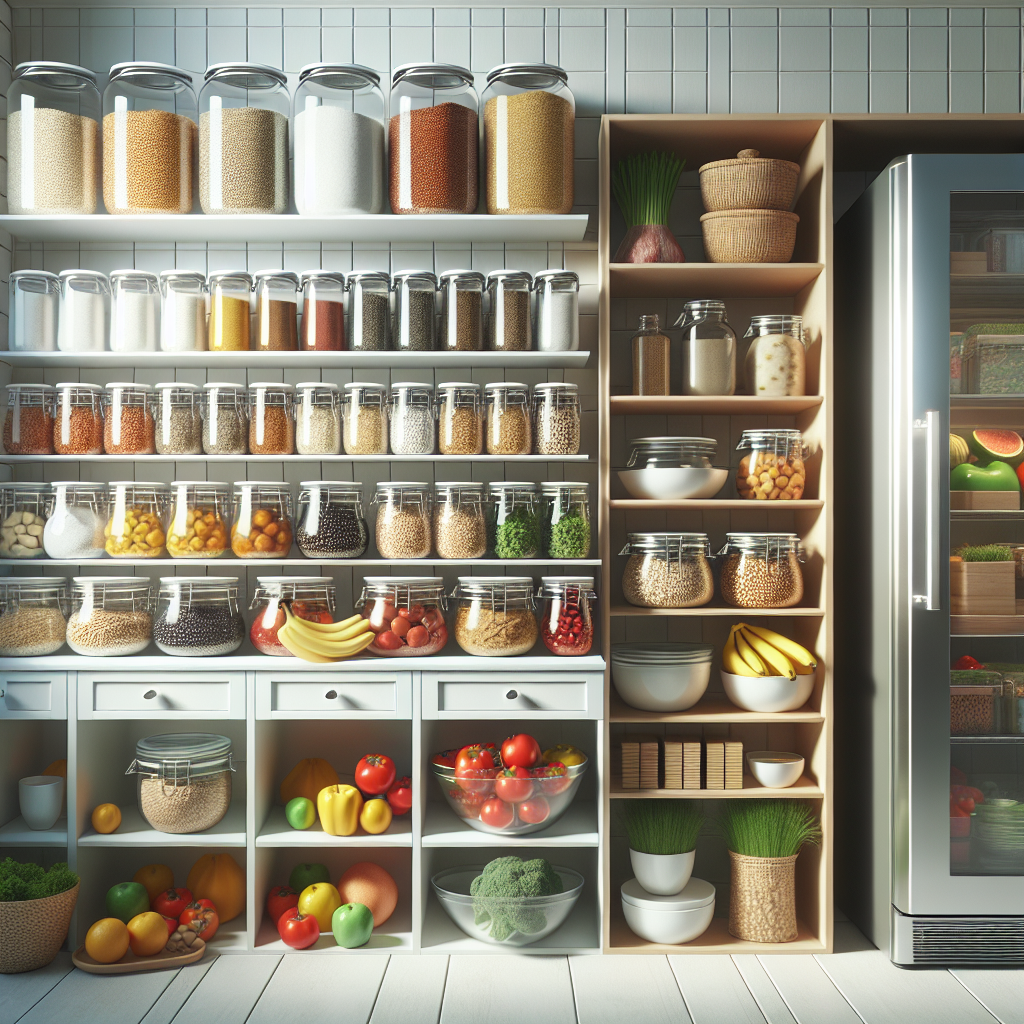Proper food storage is key to maintaining freshness, flavor, and nutritional value while reducing waste. Whether you’re looking to maximize the shelf life of your groceries or preserve your home-cooked meals, understanding the best practices for food storage is essential. Here’s your ultimate guide to food storage, packed with tips for keeping your food fresh for longer.
1. The Importance of Food Storage
Food storage isn’t just about convenience; it plays a crucial role in food safety and sustainability. Proper storage helps prevent spoilage, reduces the risk of foodborne illnesses, and minimizes waste, which is not only beneficial for your wallet but also for the environment.
2. General Guidelines for Food Storage
-
Temperature Control: Store perishable items in the refrigerator or freezer. Keep the fridge at 32°F to 40°F (0°C to 4°C) and the freezer at 0°F (-18°C) or lower.
-
FIFO Method: Practice the “First In, First Out” method by placing newer items behind older ones in your pantry or fridge. This technique encourages using older items before they spoil.
- Airflow: Ensure adequate airflow around stored food, especially in the refrigerator. Avoid overcrowding to maintain consistent temperatures.
3. The Right Containers
Choosing the right storage containers can make a significant difference in food longevity.
-
Glass Containers: Non-porous and airtight, they’re great for leftovers and dry goods. They also reduce leaching chemicals.
-
Plastic Containers: Opt for BPA-free, food-safe plastic containers. Use them for wet or dry foods but avoid using them for hot items, as they may warp.
-
Vacuum Seal Bags: Ideal for freezing meats or bulk items, these bags remove air, which slows the oxidation process.
- Freezer-Safe Containers: Ensure any container used for freezing is labeled as freezer-safe to prevent cracking and damage.
4. Specific Tips for Different Food Groups
Fruits and Vegetables
-
Fruits: Store most fruits at room temperature until ripe. Once ripe, transfer them to the fridge. Store apples separately, as they emit ethylene gas, which can speed up ripening in other fruits.
- Vegetables: Most veggies last longer in the fridge, but some, like potatoes and onions, should be stored in a cool, dark place. Use breathable bags to prolong freshness.
Dairy Products
-
Milk: Store in the coldest part of the fridge, typically towards the back. Keep the container tightly closed to prevent spoilage.
- Cheese: Wrap cheese tightly in parchment paper, then in plastic wrap, to allow it to breathe while preventing mold formation.
Grains and Legumes
-
Grains: Store in airtight containers in a cool, dark place. Whole grains have a shorter shelf life than white rice or pasta.
- Legumes: Dried beans and lentils can be stored in a cool, dry pantry for up to a year. For cooked legumes, refrigerate in an airtight container and consume within a few days.
Meats and Seafood
-
Fresh Meat: Keep in its original packaging until ready to use. Use within a few days for best quality or freeze for longer storage.
- Cooked Meat: Store in airtight containers and consume within three to four days. Use the vacuum seal method for longer storage in the freezer.
5. Freezing Tips
-
Flash Freezing: Individually freeze fruits and vegetables before placing them in a vacuum seal bag to prevent clumping.
-
Labeling: Always label items with content and date before freezing to keep track of what you have.
- Cool Before Freezing: Allow cooked foods to cool to room temperature before freezing to prevent ice crystals from forming.
6. Common Mistakes to Avoid
-
Washing Fruits and Vegetables Early: Only wash them just before use to avoid excess moisture, which encourages mold growth.
-
Incorrectly Sealing Containers: Ensure lids are on tightly to keep air out. Loose lids can lead to spoilage.
- Ignoring Expiration Dates: Familiarize yourself with “best by” vs. “use by” labels to understand how long food remains good.
7. Conclusion
Effective food storage techniques can extend the freshness and safety of your meals, benefiting both your health and your budget. By following these tips, you can reduce waste, maintain flavor and nutrition, and contribute positively to the environment. Start implementing these strategies today and enjoy fresher and safer food tomorrow!

